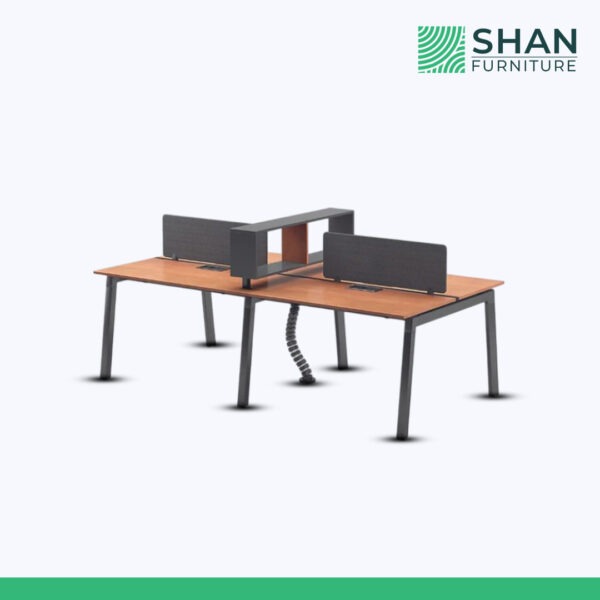Creating a workplace that promotes both productivity and well-being requires more than just efficient processes or cutting-edge technology. The physical environment, particularly the workstation setup, plays a crucial role in determining how employees feel and perform throughout the day. Ergonomic workstations are no longer a luxury but an essential aspect of modern workplaces, especially for businesses that prioritize employee wellness.
When employees spend long hours seated in front of computers, their posture, comfort, and overall health can be greatly affected. Ergonomics, therefore, bridges the gap between comfort and performance, ensuring that employees are not only efficient but also protected from the physical strains of repetitive tasks. By carefully designing workspaces, employers can support healthier habits while reducing workplace injuries and absenteeism.
The Connection Between Ergonomics and Wellness
The human body is not designed to remain in one static position for extended periods. Yet, in many modern workplaces, employees find themselves seated for eight or more hours a day, often in poorly designed chairs or at desks that do not fit their body dimensions. Over time, this mismatch can result in chronic pain, reduced mobility, and even long-term musculoskeletal disorders.
An ergonomic approach to workplace design seeks to align the environment with the natural needs of the body. Adjustable chairs, supportive desks, and accessories such as monitor risers and footrests allow employees to maintain a neutral posture. This reduces unnecessary strain and fosters a healthier work routine. When paired with education about proper posture and movement, ergonomic workstations create conditions where employees feel better, both physically and mentally.
Designing the Ideal Office Workstation
The modern office workstation is no longer simply a desk and chair. It has evolved into a carefully curated space that reflects both functionality and concern for employee wellness. Employers who prioritize ergonomics focus on flexibility and adaptability, providing tools that can be customized to individual needs.
Chairs with lumbar support, height-adjustable desks, and correctly positioned monitors help employees work without discomfort. Proper alignment ensures that the spine remains neutral, wrists avoid unnecessary strain, and eyes are not subjected to excessive fatigue. This attention to detail significantly reduces common problems such as back pain, headaches, and repetitive strain injuries. Ultimately, when employees are comfortable, they are also more engaged and productive in their roles.
The Rise of Sit-Stand Workstations
One of the most notable developments in ergonomic design has been the introduction of sit-stand desks. These allow employees to alternate between sitting and standing throughout the day, reducing the health risks associated with prolonged sitting. Standing intermittently improves circulation, lowers the risk of obesity-related issues, and keeps energy levels steady.
Employers adopting sit-stand solutions often report higher employee satisfaction and fewer complaints related to musculoskeletal discomfort. While standing all day is not advisable, striking a balance between sitting and standing allows the body to remain active and reduces the strain that sedentary routines impose. Over time, this contributes to better posture, stronger core muscles, and improved overall wellness.
The Role of Technology in Ergonomic Solutions
Technology has added a new dimension to workplace ergonomics. From smart desks that adjust height automatically to chairs that monitor posture and movement, innovations are making it easier than ever to support employee wellness. Even small accessories such as wireless keyboards, ergonomic mice, and adjustable monitor arms play an important role in minimizing strain.
In addition, software can remind employees to take breaks, stretch, or change positions, promoting healthier work habits. These digital tools reinforce the physical design of ergonomic workstations, ensuring that employees do not fall into unhealthy routines. When used consistently, technology acts as a partner in maintaining both comfort and productivity throughout the workday.
Reducing Stress Through Ergonomic Design
Wellness is not limited to physical health; it also extends to mental well-being. An uncomfortable workstation can contribute to stress, frustration, and reduced concentration. When employees are distracted by discomfort or physical pain, they are less likely to feel motivated and more likely to experience burnout.
By creating ergonomic workstations, employers demonstrate a commitment to employee care. This sense of being valued can reduce stress levels and improve workplace morale. Comfortable seating, adequate lighting, and noise-reducing elements all contribute to an environment where employees feel supported. Over time, such thoughtful design has a profound effect on workplace culture, leading to greater loyalty and job satisfaction.
Encouraging Movement and Flexibility
Even the best-designed workstation cannot completely eliminate the risks of prolonged sitting or repetitive tasks. Therefore, encouraging employees to move regularly is just as important as providing ergonomic furniture. Employers can promote wellness by fostering a culture that values movement, whether through walking meetings, stretch breaks, or on-site wellness programs.
A workstation that accommodates movement, such as one with flexible layouts or space for stretching, reinforces this principle. When employees know they are encouraged to take breaks and adjust their posture, they are more likely to stay energized and focused throughout the day. This blend of physical comfort and organizational support maximizes the benefits of ergonomic design.
The Business Benefits of Ergonomic Investments
While ergonomic workstations primarily aim to improve employee wellness, they also provide significant advantages for businesses. Reduced absenteeism, fewer workplace injuries, and lower healthcare costs are some of the most tangible results. In addition, productivity often improves when employees are comfortable and free from pain.
A well-designed workstation also enhances recruitment and retention efforts. In a competitive job market, candidates increasingly value employers who prioritize health and well-being. By investing in ergonomics, organizations send a clear message that they care about their workforce. This not only attracts top talent but also fosters long-term loyalty.
Creating a Culture of Wellness Through Ergonomics
Implementing ergonomic solutions is most effective when it is part of a broader culture of wellness. Providing the right furniture and accessories is only the first step; training employees on how to use them correctly ensures long-term benefits. Education about posture, movement, and the importance of regular breaks makes ergonomic practices second nature.
Employers who take a proactive approach often integrate ergonomics into larger wellness initiatives, such as health screenings, stress management programs, or fitness activities. By addressing multiple aspects of employee health, organizations create a holistic environment where wellness is not a temporary initiative but an ingrained value.
The Future of Ergonomic Workstations
As the nature of work continues to evolve, so too will ergonomic solutions. Remote and hybrid work arrangements highlight the need for ergonomic principles beyond the traditional office. Employers increasingly support home-based employees with ergonomic furniture, ensuring wellness regardless of location.
Advances in technology, from artificial intelligence to wearable health devices, will likely play a larger role in customizing workstations to individual needs. Workspaces that adapt dynamically to employee habits and provide real-time feedback will redefine what it means to work comfortably. In this future, wellness and productivity will no longer be competing priorities but mutually reinforcing outcomes.
Conclusion
Ergonomic workstations are a critical investment in both employee wellness and organizational success. By aligning workplace design with human needs, employers create environments that foster comfort, reduce injury risks, and improve overall morale. From sit-stand desks and supportive chairs to technology-driven solutions, ergonomics offers a comprehensive path to healthier and more productive work.
Ultimately, the benefits of ergonomic design extend far beyond physical comfort. They contribute to reduced stress, higher engagement, and a workplace culture built on care and support. As organizations continue to prioritize wellness, ergonomic workstations will remain at the heart of creating healthier, happier, and more resilient teams.




Pingback: Top Ergonomic Office Chairs